Meet author Danielle Grandenitti
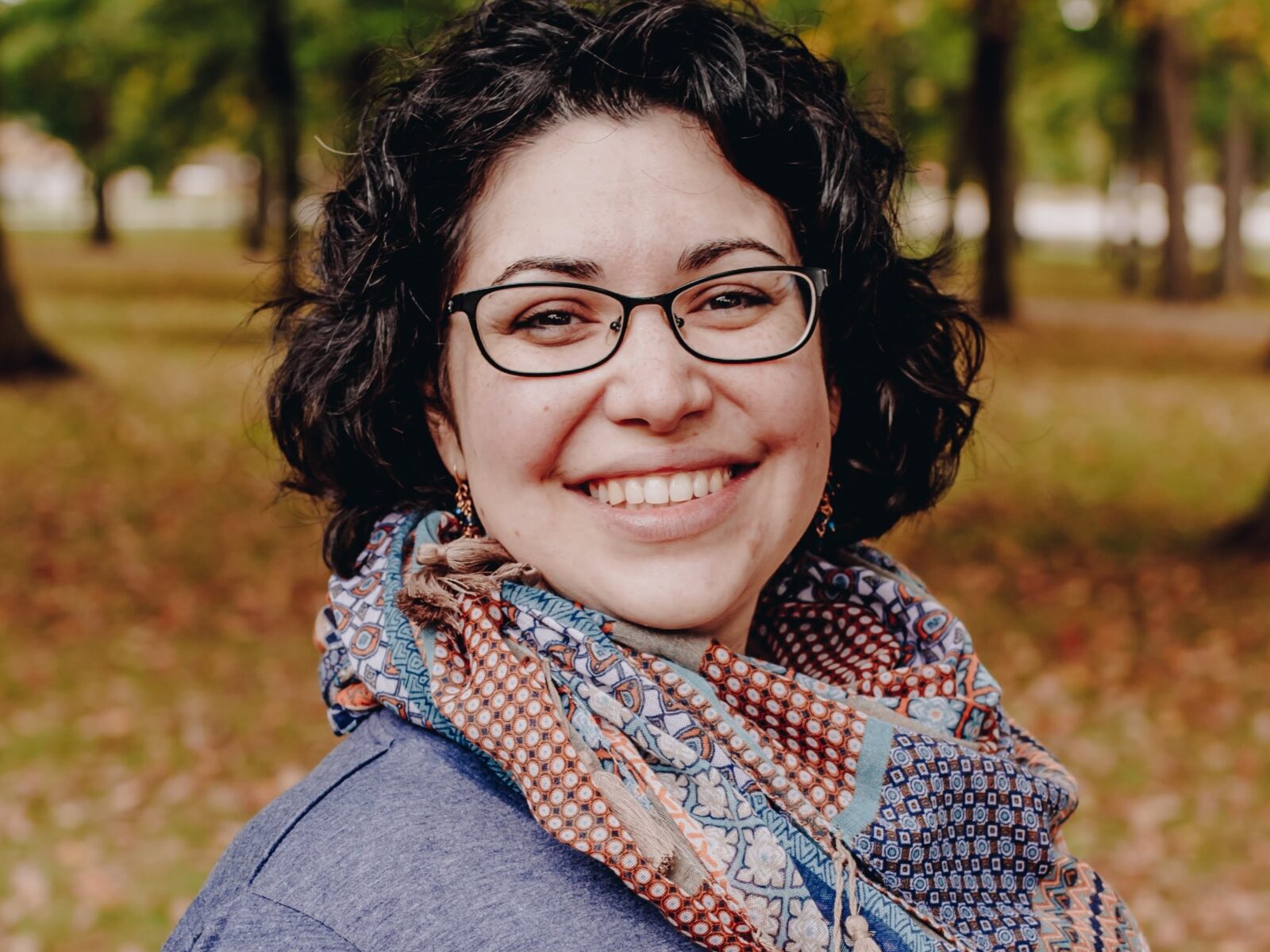
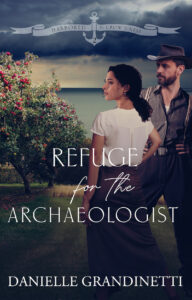 Danielle Grandinetti is an inspirational romance author, writing both historical and contemporary romance. A 2023 Finalist in the FHLCW Reader’s Choice Award, she has also won the University of Northwestern Distinguished Faith in Writing Award. Danielle is fueled by tea and books and the occasional nature walk. Originally from the Chicagoland area, she now lives along Lake Michigan’s Wisconsin shoreline with her husband and their two young sons. Find her online at daniellegrandinetti.com.
Danielle Grandinetti is an inspirational romance author, writing both historical and contemporary romance. A 2023 Finalist in the FHLCW Reader’s Choice Award, she has also won the University of Northwestern Distinguished Faith in Writing Award. Danielle is fueled by tea and books and the occasional nature walk. Originally from the Chicagoland area, she now lives along Lake Michigan’s Wisconsin shoreline with her husband and their two young sons. Find her online at daniellegrandinetti.com.
Tell us about your newest book.
Will uncovering the truth set them free or destroy what they hold most dear?
Wisconsin, 1930—With her health in shambles and her archaeological career on the line, Cora Davis retreats to Crow’s Nest and the home of her great aunt to heal. She doesn’t think much of the missing memories from between the earthquake that caused her dizzy spells and her trip home. Until she begins remembering the danger that sent her fleeing her last dig and the person responsible.
After a decade as a ranch hand, Silas Ward returned to Crow’s Nest to provide for the women in his life. That same protective instinct propels him to Cora’s aid. But when finances dwindle, the lies and greed of others threaten to ruin his family. Unless Silas can walk the thin line of compromise. A choice that might cost him Cora’s affection. As winter’s chill threatens, will Crow’s Nest prove a refuge, or will both Cora and Silas have no choice but to sacrifice their chance at happiness to save those they love? Welcome to Crow’s Nest, where danger and romance meet at the water’s edge.
What inspired you to write Refuge for the Archaeologist?
This story was born out of a desire to write a character with migraine. It’s a neurological disease I battle, and I wanted an opportunity for others like me to read a character like us. With migraine, however, no two cases are alike, and my main character’s situation is definitely complicated.
What genre do you focus on?
I write inspirational romance. Refuge for the Archaeologist is my fifth historical romance with a suspense thread, but this summer, my debut contemporary sweet romance releases. I’m excited to be adding a second genre to my book list!
Why do you write?
I write because I love it. I love story and I love putting words on paper. It’s healing and refreshing, and a gift I thank God He has given me the opportunity to pursue.
Who is your main character, and how did you choose that name?
Cora Davis is my main character. I wanted to give her a strong name for all she would face through the pages of my story.
What’s the best part of your author’s life?
I love so much about being an author. I love the writing, the crafting of a story. I also love interacting with readers and fellow authors. The Christian bookish community is a joy to be a part of!
What’s one thing your readers should know about you?
This goes back to the inspiration for this story. I battle chronic migraine and, for me, it’s more than just a headache. Because of how much it impacts my life, I also like to spread awareness for this incurable neurological disease. If you’re someone who battles migraine, you’re not alone!
What is your favorite pastime?
Perhaps it’s cliche to say as a writer, but I love to read. I read one to three books a week. It’s my way to decompress, and helps reduce stress.
Do you have other books? We’d love to know.
I do. As I mentioned above, Refuge for the Archaeologist is book 2 in the Harbored in Crow’s Nest series. Book One is Confessions to a Stranger. If you enjoy this series, then check out my first historical romance series, beginning with To Stand in the Breach. And, on August 22, my debut Love Inspired romance releases. It’s called A Father for Her Boys.
What are you working on now?
I’m currently working on Book Four in the Harbored in Crow’s Nest series. Relying on the Enemy is a marriage of convenience story following Silas’s sister-in-law, Marian, and her two little girls, who you meet in Refuge for the Archaeologist.
Website: daniellegrandinetti.com
Link to book: https://daniellegrandinetti.com/refuge-for-the-archaeologist/
Social media links:
Meet author Jane Daly
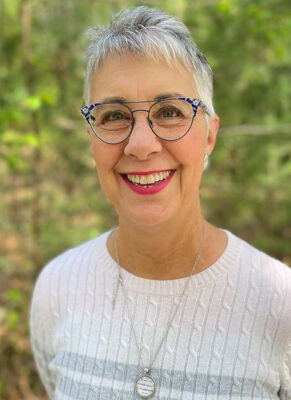
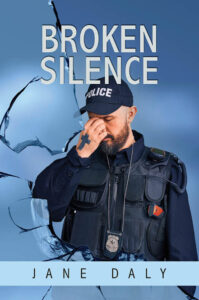 Jane is addicted to coffee, purple pens, and her husband, not necessarily in that order. A self-proclaimed introvert, she enjoys the solitude of riding shotgun in Rigsby, her 37-foot motor home. But when they pull into a new campground, her favorite thing is to make new friends and find hangouts featuring local musicians. Her fantasy involves writing lyrics for country music songs and listening to them on the radio. In the meantime, she’ll stick to writing novels. And seeing as much of the country as possible.
Jane is addicted to coffee, purple pens, and her husband, not necessarily in that order. A self-proclaimed introvert, she enjoys the solitude of riding shotgun in Rigsby, her 37-foot motor home. But when they pull into a new campground, her favorite thing is to make new friends and find hangouts featuring local musicians. Her fantasy involves writing lyrics for country music songs and listening to them on the radio. In the meantime, she’ll stick to writing novels. And seeing as much of the country as possible.
Tell us about your newest book.
It’s all about secrets. When we reveal our secrets and bring them into the light, they lose power over us.
What inspired you to write Broken Silence?
I wrote Broken Silence because when we hide our past sins from others, it puts up barriers to having deep and lasting relationships. Confessing our struggles to one another helps us grow.
What genre do you focus on?
I write contemporary women’s fiction because that’s what I like to read. I have two nonfiction titles in publication too, but my heart is in creating stories.
Why do you write?
I’ve wanted to write ever since I first got hold of the Nancy Drew series. Reading is my go-to relaxation place. I want to give my readers the same sense of satisfaction in reading a well-paced novel.
Who is your main character, and how did you choose that name?
Jinxi is such an unusual name. I had a bank customer with that name and I immediately knew she would be in a book.
What is your work schedule like when you’re writing a book?
I spend a lot of time writing ‘in my head’ before actually putting fingers on my keyboard. Once I sit down to begin, I have a good idea where I’m going to start and where the story will finish. Along the way, the characters let me know where we should go. Sounds weird to anyone who doesn’t write!
What is the hardest part of being an author?
The solitude! It’s hard feeling like you’re completely alone on this writing journey. That’s why I love to go to conferences and attend Zoom meetings with other authors.
What is your favorite pastime?
One of my favorite pastimes is to walk around the campground where hubby and I are staying and chat with people. Most people are super friendly. They’re on vacation and have plenty of time to talk. They’re sitting outside their motor home or trailer in a camp chair, just hanging out and enjoying nature. Conversations are easy to initiate. “I see from your license plate you’re from… Where are you headed next?”
Do you have other books? We’d love to know.
Thank you for asking. The Girl in the Cardboard Box is a stand-alone novel dealing with adoption, foster care, and abortion, and has an adorable feral child. Broken, A Story of Redemption is the book that comes before Broken Silence. The third in the series, Broken Trust, will be released next year.
What are you working on now?
I’m working on the first round of edits for my next release, Where Is My Sister that will release in November.
Website: https://janesdaly.com/
Link to book: https://www.amazon.com/Broken-Silence-Book-2-ebook/dp/B0BYTLZS2R
Let’s Meet Addi
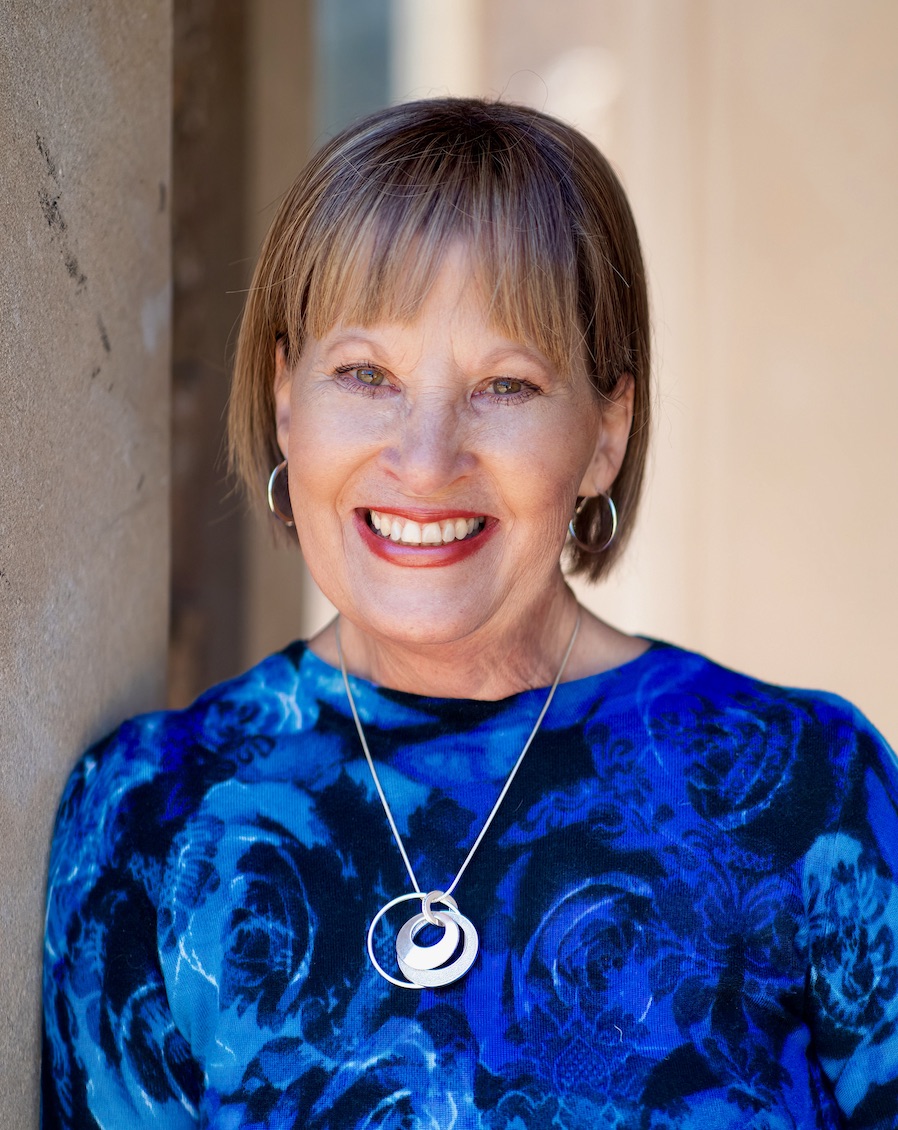
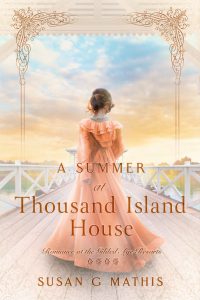 In my latest Thousand Island Gilded Age story, A Summer at Thousand Island House, Addison Bell (Addi), is my protagonist. Here’s a little excerpt from the story so you can get to know her a little. Enjoy!
In my latest Thousand Island Gilded Age story, A Summer at Thousand Island House, Addison Bell (Addi), is my protagonist. Here’s a little excerpt from the story so you can get to know her a little. Enjoy!
Addi’s nerves got the better of her, and her tongue took flight. “I’m sorry I’m tardy, sir. The horse threw a shoe on the way here, and the wagon went into the ditch, and Mr. Stevens didn’t know what to do, but then a farmer helped us out, but …”
Mr. Donovan held up his hand to stop her chattering but cast her a kind smile. He took the carpetbag from her and motioned for her to enter the pavilion. “It’s all right, miss. This is your day to settle in and prepare for the rest of the summer. You’ve no children waiting.”
“Thank goodness.” Addi sighed loudly, adjusting her teetering hat.
Once inside, Mr. Donovan paused in the foyer and tipped his head, assessing her from her still teetering hat to her scuffed boots. “Aye, this is the Thousand Island House recreation pavilion, where you will spend the next several months caring for our patron’s children. I must say, your recommendation was quite glowing, especially from my crotchety old friend, Alvin Sanderson. But I didn’t expect someone so young to be so accomplished, and from Watertown Center?”
“I’m twenty-four, sir. I’ve taught up to eighteen children concurrently for the past five years. All ages. All temperaments. And I have to tell you that some of those students, especially the older ones, gave me great consternation. But I overcame their podsnappery with determination and grit.” Addi stood as tall as her small frame would rise and lifted her chin.
Mr. Donovan chuckled, wiping the mirth away with the sweep of his hand. “Your enthuzimuzzy is commendable, miss, but quite unnecessary. The former nursery teacher in your position, Mrs. Randolph, barely got off her perch ‘cept when it was a matter of life and death. Nevertheless, the parents and children appreciated her grandmotherly ways.”
Addi harrumphed, and a small snicker escaped her lips. “I, sir, am not a grandmother, and I believe children are to be given all the fullness of experiences available. Music. Dance. Sports. Nature. Games. Play. And a good dose of God.”
“Blathers! You misunderstand. We didn’t hire you to teach school. You’ll be caring for four-to-seven-year-olds. Mere babes out of diapers.” Mr. Donovan sucked in a breath.
“Oh, I don’t plan to drill them in the three R’s.” Addi shook her head. “I simply want to expose them to a wealth of experiences while they’re under my care.”
She stood her ground and turned her attention to the pavilion signs just beyond them—Game Room, Billiard Room, Bowling Alley, Children’s Nursery, Men’s and Women’s Bathing
Room, Swimming Pool, and Dancing Pavilion. The choices made her head swim. How could one choose from such lavish entertainments?
Thousand Island House History

 Liam averted her attention, pointing to the hotel. “Let’s start here with a brief history. The Thousand Island House was finished in 1873, the year after President Grant visited the islands with George Pullman and thus began the Golden Age of the Thousand Islands. Col. Orin G. Staples built the establishment in less than a year, and it’s been a popular destination ever since.”
Liam averted her attention, pointing to the hotel. “Let’s start here with a brief history. The Thousand Island House was finished in 1873, the year after President Grant visited the islands with George Pullman and thus began the Golden Age of the Thousand Islands. Col. Orin G. Staples built the establishment in less than a year, and it’s been a popular destination ever since.”
Miss Bell put a thin finger to her chin. “I’ve heard of him. Didn’t Col. Staples start a medicine business in Watertown, sell it to someone in Albany, and build dozens of houses in the city with the profits?”
“Fifty-seven fine homes, to be exact. You have a keen memory. And just two years ago, he built the elegant Willard’s Hotel in Washington, D.C.”
“You don’t say?” She studied the four-story hotel. “He certainly is a talented businessman, and this hotel is mighty grand.”
He nodded. “Three-hundred-ninety-five rooms accommodate up to seven hundred guests, complete with family suites, a huge hundred-foot by forty-foot dining room, and a glorious six-hundred-and-twenty-four-foot grand promenade verandah.”
“My, there must be an army of staff to serve so many guests.” She put her hand to her chest.
He chuckled. “One-hundred-and-fifty. Most are locals.”
“But why is it named Thousand Island House without an ‘s’ on Islands. Aren’t there over eighteen hundred islands?”
He thought a moment. “I don’t rightly know. Maybe to be different? You ask some crackin’ good questions, miss. No wonder you’re a teacher.”
“Thank you, kind sir. I appreciate the complement.” Miss Bell grinned, her dark eyes sparkling like garnet gemstones.
They entered the hotel servants’ area and passed through an enormous and modern kitchen. Liam warmly greeted everyone he met, whether servant or guest. They deserved no less.
He led the pretty lass up the staff stairs and stopped before entering the first-floor corridor, keeping his words barely above a whisper so as not to disturb any guests. “I’ll take you floor by floor, but we must be discreet.”
“Of course, sir.” She nodded, her dark eyes twinkling with excitement.
Opening the door to a wide hallway, he began his tour. “On the first floor is the office, parlor, reception, reading rooms, bar, billiard room, telegraph office, barber shop, dining room, bathrooms and twenty-one guestrooms. You’ll rarely, if ever, need to come here, but follow me, please, while I drop off this envelope.”
On the way, Miss Bell’s curiosity reminded him of a wee lassie in a sweets shop. She peeked into the luxurious common areas, gawked at the elaborate artwork, and discretely glanced at the elegantly dressed patrons. No wonder she wanted to share that enthusiasm with the children.
Meet author Sherri Wilson Johnson
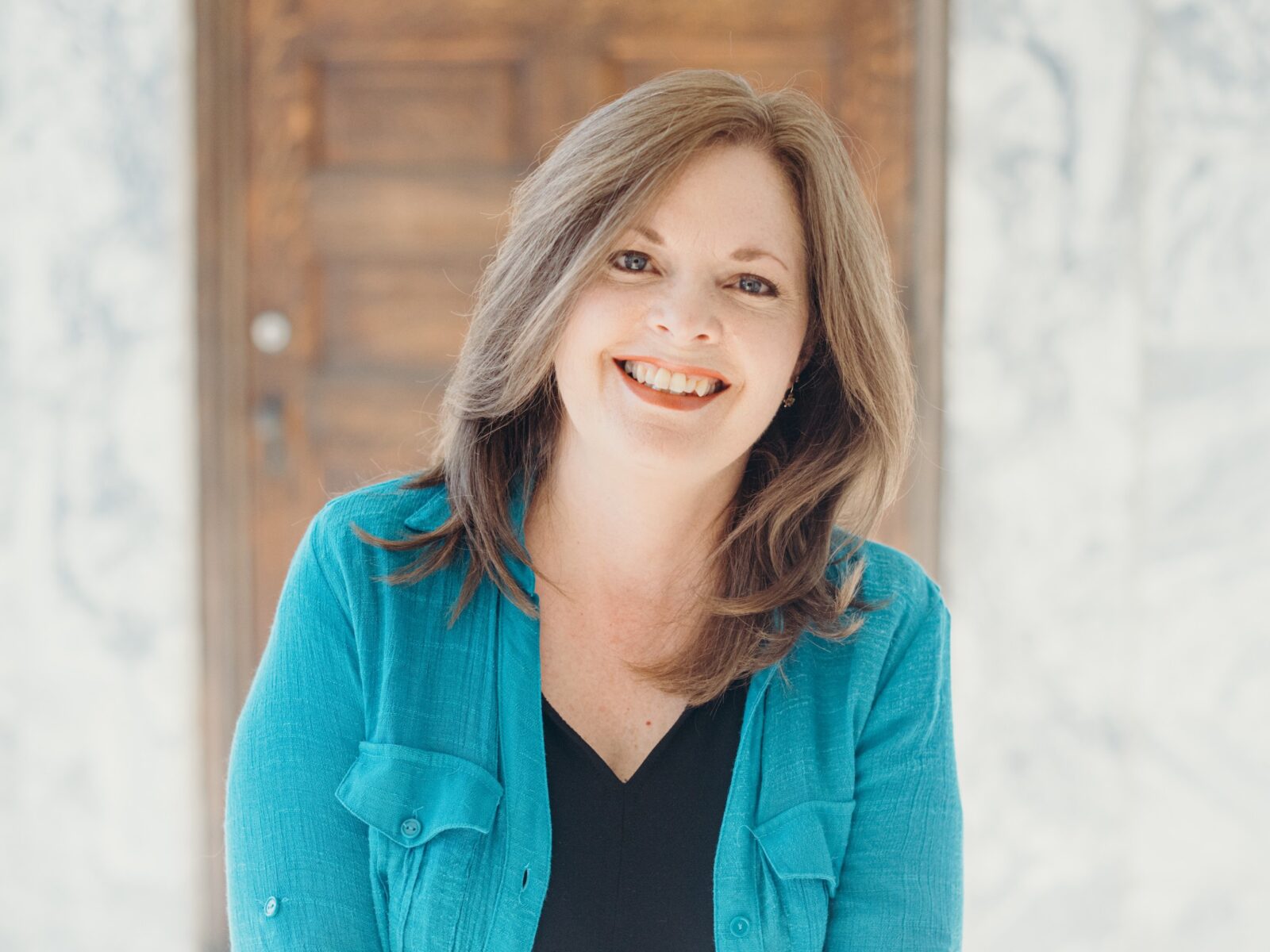
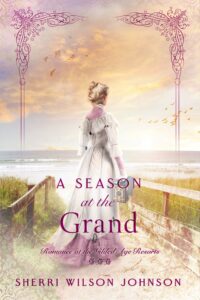 Sherri Wilson Johnson has always been a sucker for a good love story—whether it’s real life or fiction (both historical and contemporary). She writes faith-based Contemporary Romantic Suspense and Historical Romance with a splash of suspense and/or mystery. Sherri and her husband are empty-nesters and live in Georgia with their two dogs. When not working as a publishing assistant, she spends time with family, does jigsaw puzzles, or curls up with a book.
Sherri Wilson Johnson has always been a sucker for a good love story—whether it’s real life or fiction (both historical and contemporary). She writes faith-based Contemporary Romantic Suspense and Historical Romance with a splash of suspense and/or mystery. Sherri and her husband are empty-nesters and live in Georgia with their two dogs. When not working as a publishing assistant, she spends time with family, does jigsaw puzzles, or curls up with a book.
Tell us about your newest book.
A Season at the Grand is set in the Mobile Bay Area of Alabama, specifically in Point Clear. Amelia Harris is a traveling photographer with The Photographic Times, and she’s commissioned to take pictures of the wealthy vacationers at the resort. Her matchmaking aunts are trying to marry her off because they think she’s a spinster. But she’ll have nothing to do with it. Little did she expect to fall in love while at the Grand!
Here is the official blurb:
Can the perfect picture reveal the truth before it’s too late? Photographer Amelia Harris has had enough of her aunts’ meddling matchmaking. So when The Photographic Times commissions her to spend the summer on Mobile Bay taking portraits of the elite and capturing nature for penny postcards, Amelia happily accepts. But this job is not as simple as it appears, and Amelia must defend against naysayers if she’s to ever gain respect in a man’s world. And that doesn’t leave any room for romance.
Point Clear Resort General Manager Titus Overton never wanted the position he inherited when his cousin passed away. If it were up to him, he would be traveling with the Audubon Society to far-off places, enjoying the solitude of nature instead of providing relaxation for his guests. And now he has to deal with the big-city photographer stomping her way through sand dunes that house the migratory birds nesting there. But when she reveals an admiration for his feathered friends, it reawakens a longing in his heart he’d buried after the death of his fiancé. When threats arise against Amelia and the other resort guests, Titus knows he must step in to help. But she insists they trust God for deliverance. How can he turn to a God who took away his first beloved? As the danger closes in, he must find the courage to overcome his past before someone gets hurt—especially the woman he’s come to love.
What inspired you to write A Season at the Grand?
My love for the Mobile Bay, Alabama area, the ocean, and birds. Mobile Bay, specifically the Gulf Shores area, is my favorite vacation spot. Every time we’re there, I am inspired to write another story. This story was birthed out of one of those trips.
Also, the heroine, Amelia Harris, is a photographer making her way against all odds, and she’s loosely based off my daughter, who is a professional wedding photographer. Amelia refuses to take no for an answer and refuses to accept defeat. She’s inspiration for us all–much like my daughter who struggled to keep her business afloat during Covid when all weddings and large group activities were canceled. God was so good to her during that time, and she’s become quite resilient through it all.
What genre do you focus on?
I focus primarily on Contemporary Romantic Suspense because I like the excitement of solving a crime or finding a killer. I also love the romantic aspect, writing how a hero and heroine come to need and want each other and work together to solve problems.
Why do you write?
I write because it’s my favorite thing to do. I love to tell an entertaining and inspiring story but one that also brings to the reader the message of hope and perseverance. I’m not a super competitive person, but I’m competitive with myself. So I’m driven to write the next book and tell the next story in a better and more well-crafted way. In a way, I guess I’m driven to outdo myself.
Who is your main character, and how did you choose that name?
The heroine is Amelia Harris, a photographer for The Photographic Times. Her name comes from the name of one of my husband’s great-great grandmothers.
What is your work schedule like when you’re writing a book?
I work fulltime as a virtual assistant for Christian authors and speakers, publishers, and agents. I also am a self-publishing coach and a graphic designer. Because of that full schedule, I write in the mornings before work, in the evenings, and on the weekends whenever time allows. I set word count goals for myself, and I try as hard as I can to meet those goals.
What’s one unusual fact about you?
I’m much younger in my mind than I am in real life. I’m probably more playful than I should be at my age. I love to sing and dance around the house, love to ride roller coasters, love to splash like a child in the ocean. I try hard not to take myself too seriously.
How have you changed or grown as a writer?
I’ve learned how to let go of my book babies and move on to write the next one rather than spend years and years on the same book. Author Carrie Turansky told me once that I needed to let go of my book baby and not act like it was the only book I would ever write. She said this because my first book took from 1993 to 2011 to write, edit and see published. That was probably the best advice I’ve ever received. Now, even though I love each book and all my characters, I can let them go and meet some new friends in the next story.
What is your favorite pastime?
Besides writing and reading, I love to put together jigsaw puzzles, try my hand at oil painting (I’m not any good), go to church and hang out with friends and family.
Do you have other books? We’d love to know.
Yes, I have thirteen published books and am currently writing book fourteen. Readers can find all my books on Amazon here:
https://www.amazon.com/stores/Sherri-Wilson-Johnson/author/B004VLWLR4
What are you working on now?
I am currently writing book five in my Jeopardized Reunions series, also set on Mobile Bay, Alabama, like A Season at the Grand. This book is set on an offshore oil platform out in the Gulf of Mexico.
Website: https://sherriwilsonjohnson.com/
Link to book: https://www.amazon.com/Season-Grand-Romance-Gilded-Resorts-ebook/dp/B0BTDW31DB
Social media links: https://linktr.ee/sherriwilsonjohnson
Thousand Islands Searchlight Boat Tours
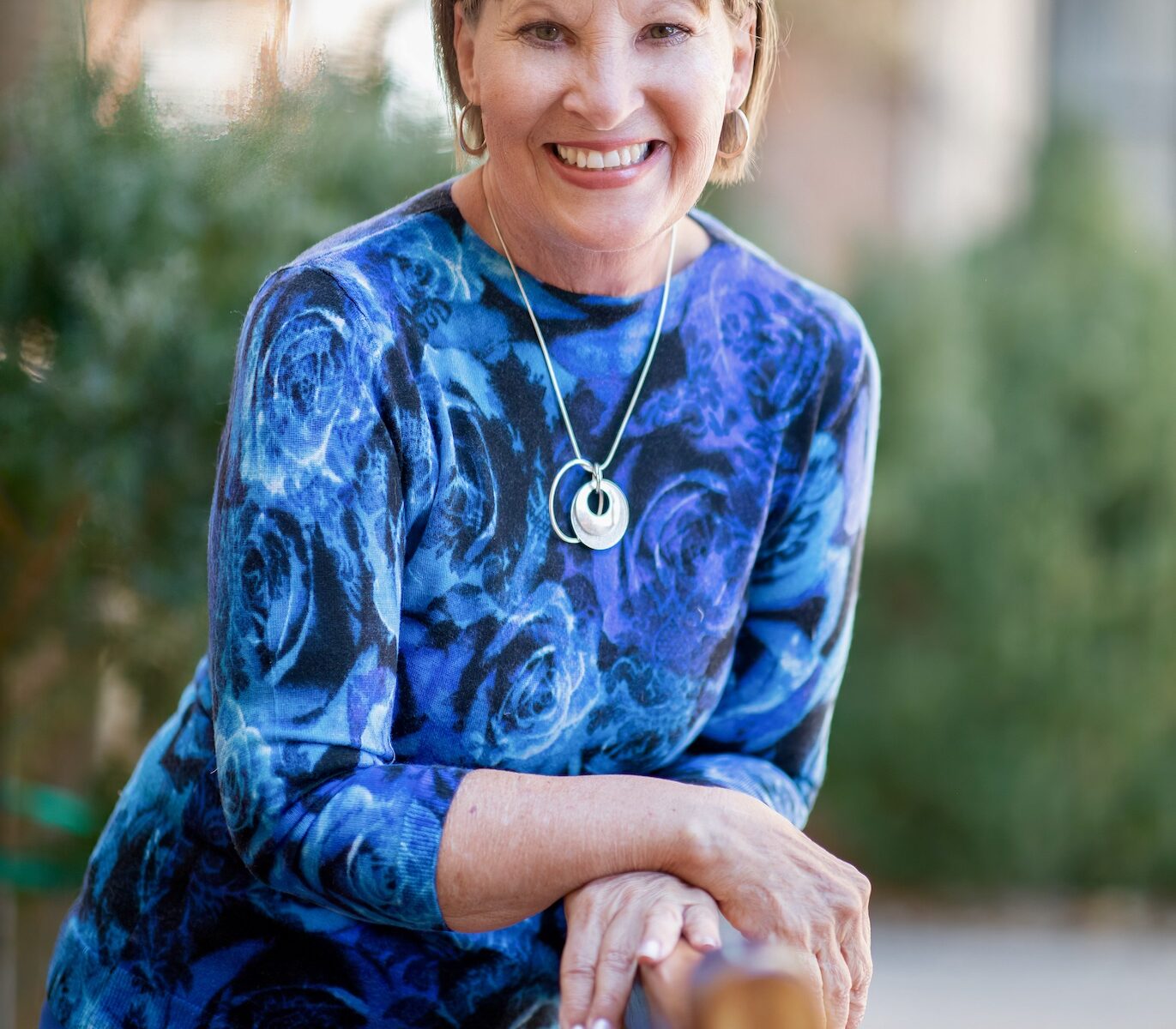
 Though I haven’t had the privilege of experiencing a searchlight tour, my fascination with them brought me to include an important searchlight boat tour scene in my latest story, A Summer at Thousand Island House.
Though I haven’t had the privilege of experiencing a searchlight tour, my fascination with them brought me to include an important searchlight boat tour scene in my latest story, A Summer at Thousand Island House.
But what are they? In essence, a searchlight boat tour takes passengers on an evening tour through the Thousand Islands. In the darkness of night, the boat creeps along the channels and shines a searchlight on interesting things they come across.
I can imagine it’s a mixture of excitement, fear, and a bit creepy, and my characters experience all of these. The Thousand Islands in the St. Lawrence River was known for such a thrill, from the late 1800s until today.
Here’s a little taste of a searchlight tour:
The setting sun glowed a dramatic orange as Liam escorted Addi onto the gleaming white St. Lawrence steamer, along with several hundred other passengers. He led her to the bow’s upper deck railing, facing west. A large flag fluttered in the gentle breeze on its bow, another on a tall mast near the wheelhouse, four smaller flags midship, and an enormous US flag hung on the stern.
Midship, a trio played a haunting tune on a harp and two violins, echoing down the hallway and dancing on the water, creating a most pleasant beginning to what he hoped would be a magical evening.
Addi leaned on the railing, closed her eyes, and smiled. “Isn’t the music wonderful? It sounds like a sunset.”
As if she’d forgotten something, her eyes popped open just as the orange ball exploded into reds and yellows, and then burst into the prettiest purples and lavenders Liam had ever seen. She gasped and spread her arms as if she were a bird taking flight, almost smacking him in the face. She didn’t even notice, so absorbed in the moment.
He loved that.
“Oh, Liam, I’ve never seen such a dramatic, beautiful, wonderful sunset. Can you imagine what heaven must be like if it’s this lovely here on earth?”
He studied her angelic face, aflame with the colors of the sunset. “I cannot. But just now, your loveliness comes the closest to an angelic being as I’ve ever seen.”
“Oh Liam, you say the sweetest things.” She peeked out of the corners of her eyes, barely turning her head.
“Miss, I only speak the truth.” He pasted his hand on his chest as if offended.
The captain stepped out of the wheelhouse and onto the deck. The crowd quieted. In a booming voice, he addressed his passengers. “Ladies and gentlemen. If you think that sunset was lovely, that’s just the prelude. Our one-million candlepower searchlight with its forty-eight-inch parabolic mirror will take us on a unique and magical tour of the islands. In the dark, starry night, you’ll see the Thousand Islands like you’ve never seen them before. We’ll navigate through narrow channels and around islands. We may even see a muskie, happily popping its head out of the water to bid you good evening. Now, enjoy the refreshments, the music, and the magic of our Thousand Islands Searchlight Tour.”
The crowd clapped and cheered, and the familiar whistle, whose distinctive chime note could be heard whenever it left the dock, sounded loud and clear.
Liam chuckled. “You’ll hear those hisses of steam from the whistle throughout the evening. One blast signals something is dead ahead, two is for starboard, and three is for port. They sound it when they spot buoys and other official markers, when they see private markers, or when something else might prove a danger. Navigating the river in the day is tricky enough. Night navigation must be done with the utmost care.”
“Is it safe?” Addi’s eyes flashed with fear.
He took her hand in his. “I wouldn’t bring you if it wasn’t. Fear not. This crew has been navigating these waters, day and night, for years.”
To read the rest of the story, pick up a copy of A Summer at Thousand Island House.
